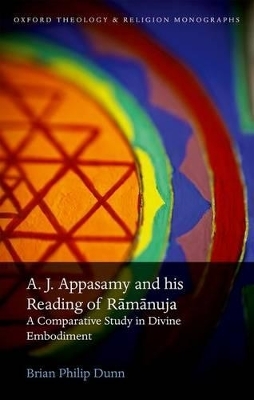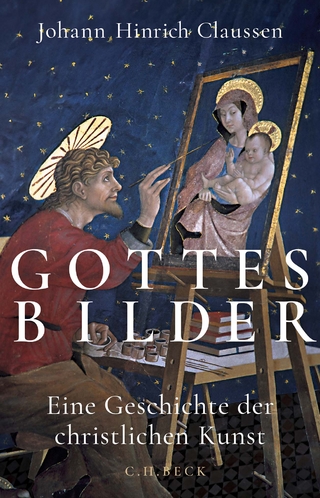
A. J. Appasamy and his Reading of Rāmānuja
A Comparative Study in Divine Embodiment
Seiten
2016
Oxford University Press (Verlag)
978-0-19-879141-6 (ISBN)
Oxford University Press (Verlag)
978-0-19-879141-6 (ISBN)
This study focuses on the embodiment theology of the South Indian theologian A. J. Appasamy (1891-1975). It argues for the distinctive theological voice of Appasamy, whose sacramental reading of the Gospel of John, influenced by Rāmānuja (1017-1137), opens up new Christological and comparative possibilities.
In this work, Brian Philip Dunn focuses on the embodiment theology of the South Indian theologian, A. J. Appasamy (1891-1975). Appasamy developed what he called a 'bhakti' (devotional) approach to Christian theology, bringing his own primary text, the Gospel of John, into comparative interaction with the writings of the Hindu philosopher and theologian, Rāmānuja. Dunn's exposition here is of Appasamy's distinctive adaptation of Rāmānuja's 'Body of God' analogy and its application to a bhakti reading of John's Gospel. He argues throughout for the need to locate and understand theological language as embedded and embodied within the narrative and praxis of tradition and, for Appasamy and Rāmānuja, in their respective Anglican and Śrivaiṣṇava settings. Responding to Appasamy, Dunn proposes that the primary Johannine referent for divine embodiment is the temple and considers recent scholarship on Johannine 'temple Christology' in light of Śrivaiṣṇava conceptions of the temple and the temple deity. He then offers a constructive reading of the text as a temple procession, a heuristic device that can be newly considered in both comparative and devotional contexts today.
In this work, Brian Philip Dunn focuses on the embodiment theology of the South Indian theologian, A. J. Appasamy (1891-1975). Appasamy developed what he called a 'bhakti' (devotional) approach to Christian theology, bringing his own primary text, the Gospel of John, into comparative interaction with the writings of the Hindu philosopher and theologian, Rāmānuja. Dunn's exposition here is of Appasamy's distinctive adaptation of Rāmānuja's 'Body of God' analogy and its application to a bhakti reading of John's Gospel. He argues throughout for the need to locate and understand theological language as embedded and embodied within the narrative and praxis of tradition and, for Appasamy and Rāmānuja, in their respective Anglican and Śrivaiṣṇava settings. Responding to Appasamy, Dunn proposes that the primary Johannine referent for divine embodiment is the temple and considers recent scholarship on Johannine 'temple Christology' in light of Śrivaiṣṇava conceptions of the temple and the temple deity. He then offers a constructive reading of the text as a temple procession, a heuristic device that can be newly considered in both comparative and devotional contexts today.
Brian Philip Dunn is an Independent Scholar.
1: An Introduction to Ayadurai Jesudason Appasamy
2: 1 Comparative Method: Theology, Religion, or Tradition?
3: P=urvapak.sa: 1922--1932 - Logos Christology
4: 1 Uttarapak.sa: 1933--1950 - Spirit Christology
5: 1 Recovering R=am=anuja's tradition
6: Siddh=anta: A Johannine temple Christology
| Erscheinungsdatum | 08.12.2016 |
|---|---|
| Reihe/Serie | Oxford Theology and Religion Monographs |
| Verlagsort | Oxford |
| Sprache | englisch |
| Maße | 144 x 223 mm |
| Gewicht | 510 g |
| Themenwelt | Religion / Theologie ► Christentum ► Kirchengeschichte |
| Geisteswissenschaften ► Religion / Theologie ► Hinduismus | |
| ISBN-10 | 0-19-879141-0 / 0198791410 |
| ISBN-13 | 978-0-19-879141-6 / 9780198791416 |
| Zustand | Neuware |
| Informationen gemäß Produktsicherheitsverordnung (GPSR) | |
| Haben Sie eine Frage zum Produkt? |
Mehr entdecken
aus dem Bereich
aus dem Bereich
von Athanasius bis Gregor dem Großen
Buch | Softcover (2024)
C.H.Beck (Verlag)
CHF 18,90
eine Geschichte der christlichen Kunst
Buch | Hardcover (2024)
C.H.Beck (Verlag)
CHF 44,75


